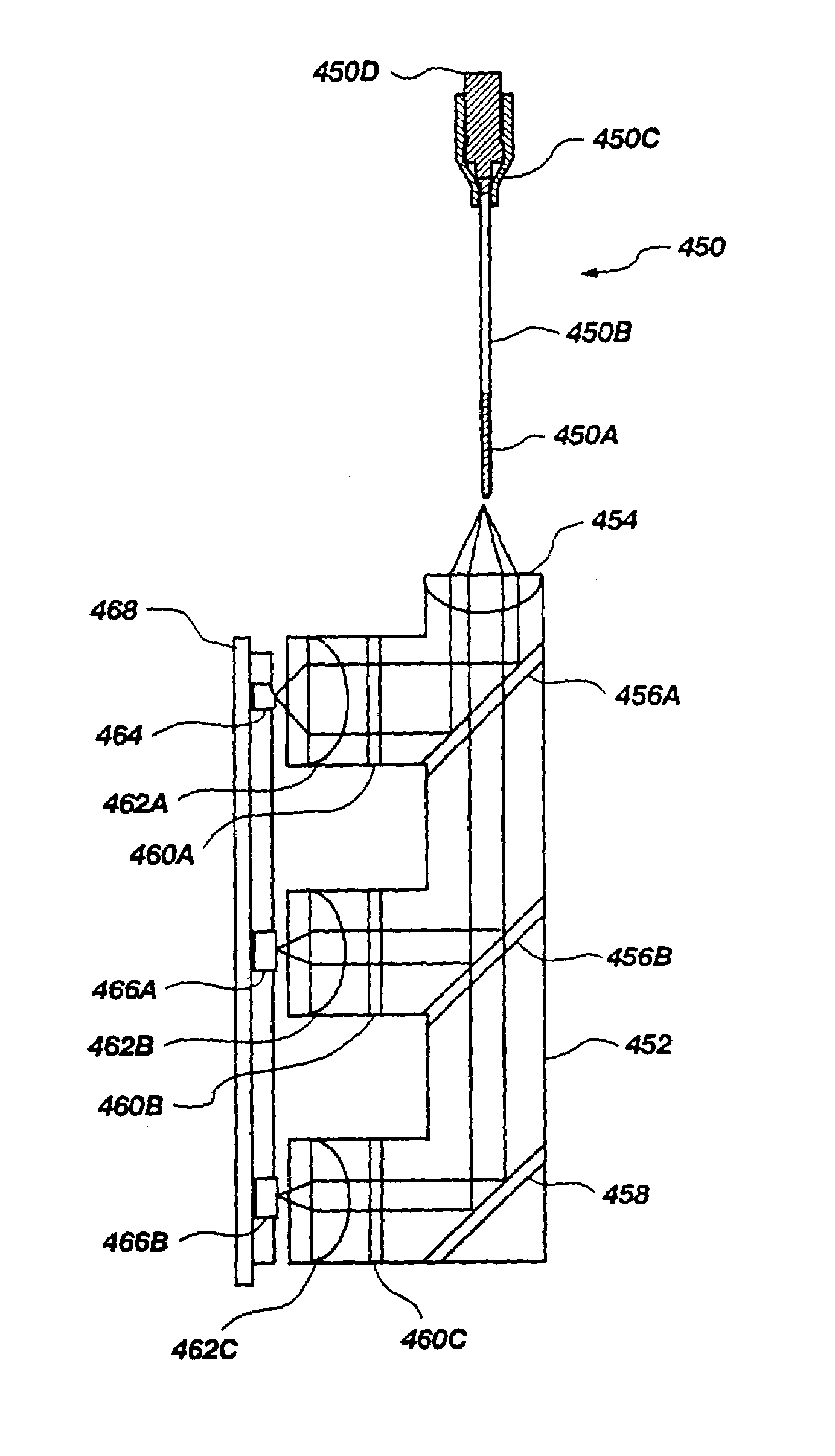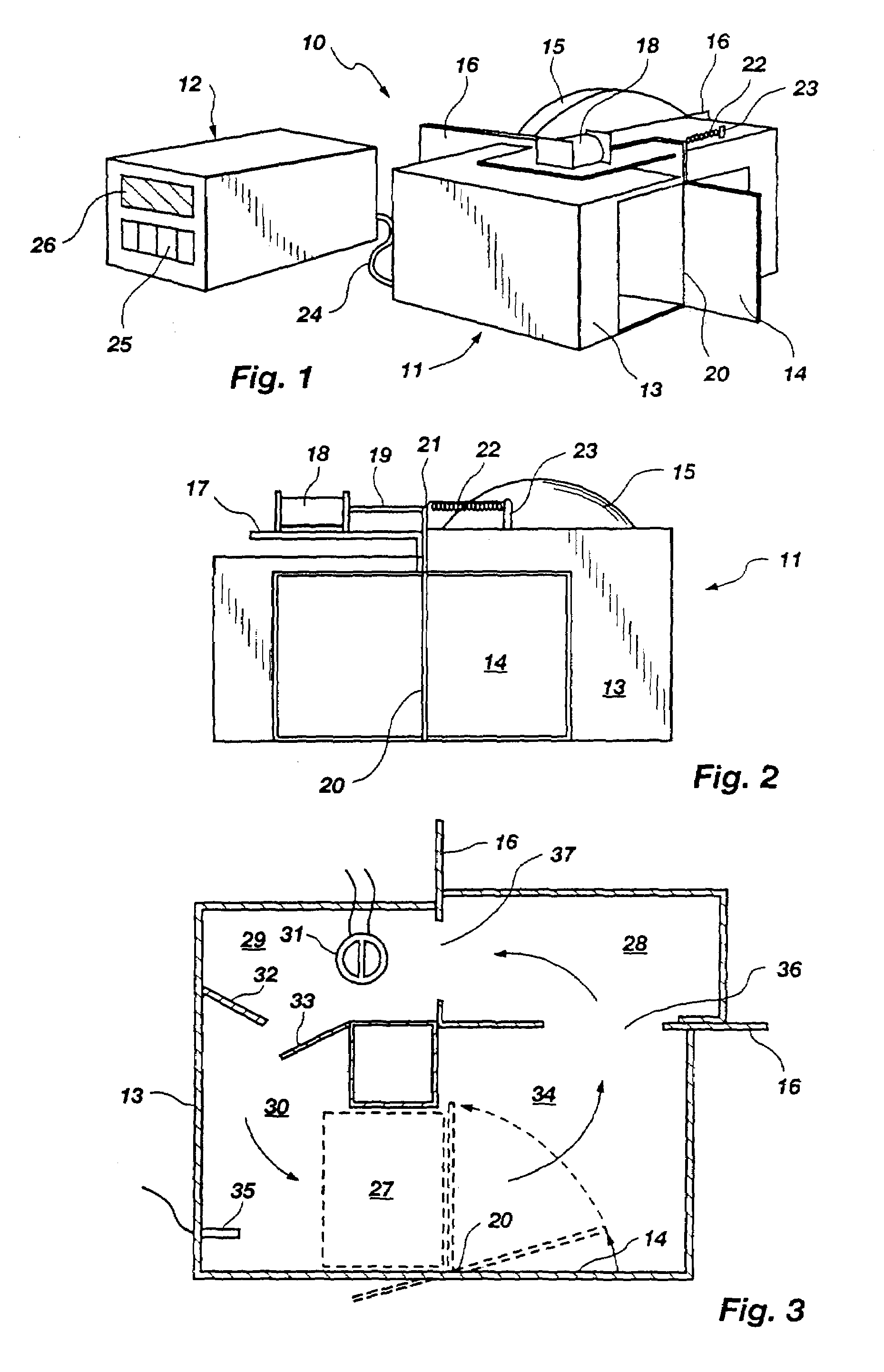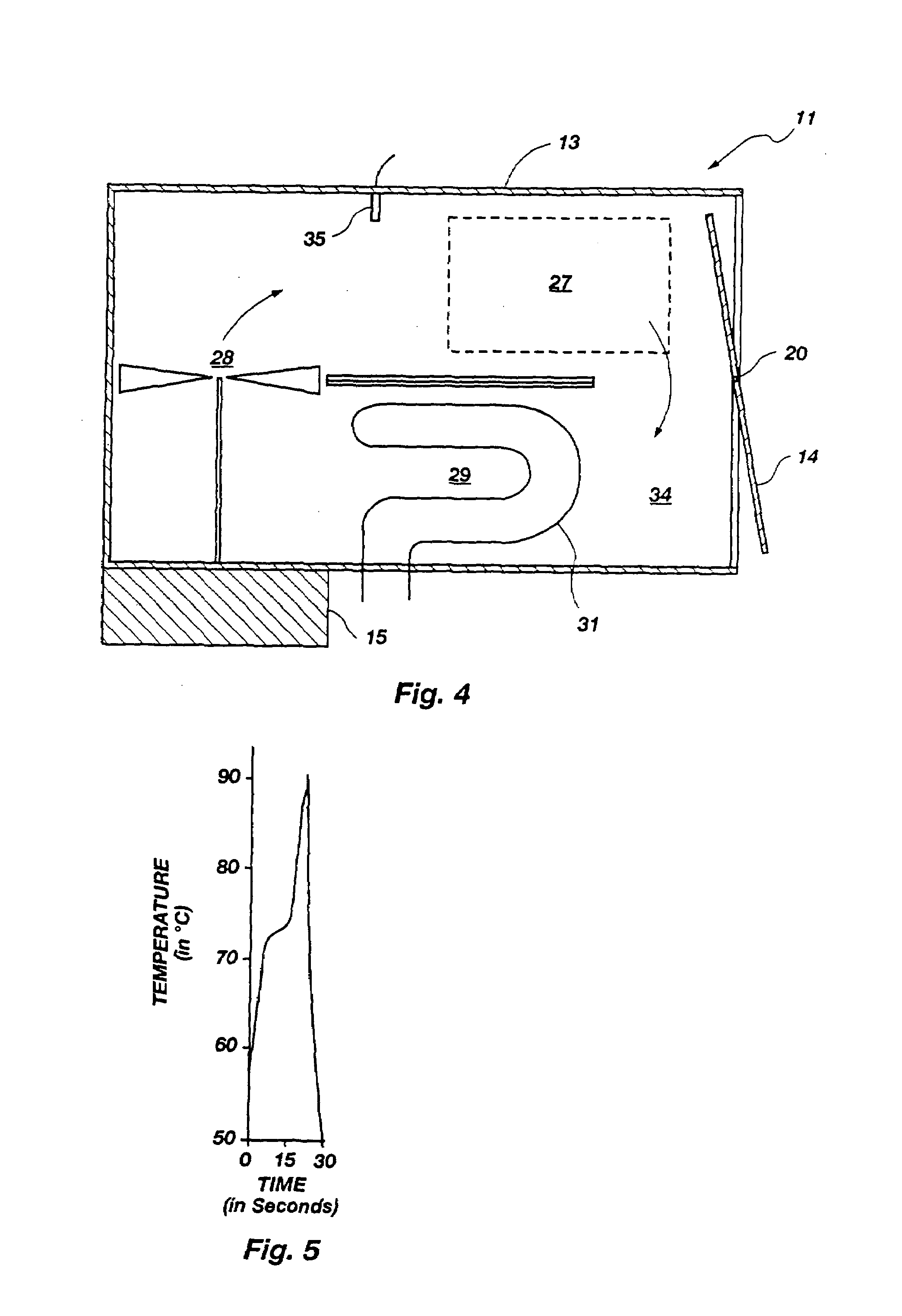Container for carrying out and monitoring biological processes
a biological process and container technology, applied in the field of containers for carrying out biological processes, can solve the problems of hindering the transfer of thermal energy, disadvantages of microfuge tubes, and undesirable use of heat block devices as heat control systems
- Summary
- Abstract
- Description
- Claims
- Application Information
AI Technical Summary
Benefits of technology
Problems solved by technology
Method used
Image
Examples
example 1
[0111]The polymerase chain reaction was run in a 10 μl volume with 50 ng of human genomic template DNAes, 0.5 mM of each deoxynucleotide, 500 nM of each of two oligonucleotide primers GGTTGGCCAATCTACTCCCAGG (SEQ ID NO:5) and GCTCACTCAGTGTGGCAAAG (SEQ ID NO:6) in a reaction buffer consisting of 50 mM Tris-HCl (pH 8.5 at 25° C.), 3.0 mM magnesium chloride, 20 mM KCl, and 500 μg / ml bovine serum albumin. Thermus aquatics DNA polymerase (0.4μ) was added, the samples placed in 8 cm long, thin-walled capillary tubes (manufactured by Kimble, Kimax 46485-1), and the ends fused with laboratory gas burner so that an air bubble was present on both ends of each tube.
[0112]The capillary tubes were then placed vertically in a holder constructed of 1 mm thick “prepunched perfboard” (manufactured by Radio Shack). The mixture was cycled 30 times through denaturation (90-92° C.), annealing (50-55° C.), and elongation (72-75° C.) to give the temperature versus time profile of FIG. 5. Temperature monito...
example 2
[0144]FIG. 9A shows the results of four different temperature / time profiles (A-D) and their resultant amplification products after thirty cycles (A-D). The profiles A and B in FIG. 9A were obtained using a prior art heating block device using the prior art microfuge tube. As can be seen in FIG. 9A, the transitions between temperatures are slow and many nonspecific bands are present in profiles A and B. Profile B shows improvement in eliminating some of the nonspecific bands (in contrast to profile A) by limiting the time each sample remains at each temperature thus indicating that shorter times produce more desirable results.
[0145]Profiles C and D were obtained using the apparatus of FIGS. 8A-B. As can be seen in FIG. 9A, amplification is specific and, desirably, even though yield is maximal in C (60 second elongation) it is still entirely adequate in D (10 seconds elongation).
[0146]The optimal times and temperatures for the amplification of a 536 bp fragment of β-globin from human ...
PUM
| Property | Measurement | Unit |
|---|---|---|
| inner diameter | aaaaa | aaaaa |
| inner diameter | aaaaa | aaaaa |
| volume | aaaaa | aaaaa |
Abstract
Description
Claims
Application Information
 Login to View More
Login to View More - R&D
- Intellectual Property
- Life Sciences
- Materials
- Tech Scout
- Unparalleled Data Quality
- Higher Quality Content
- 60% Fewer Hallucinations
Browse by: Latest US Patents, China's latest patents, Technical Efficacy Thesaurus, Application Domain, Technology Topic, Popular Technical Reports.
© 2025 PatSnap. All rights reserved.Legal|Privacy policy|Modern Slavery Act Transparency Statement|Sitemap|About US| Contact US: help@patsnap.com



